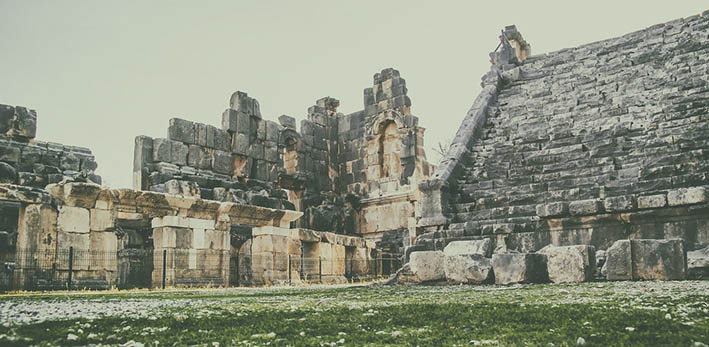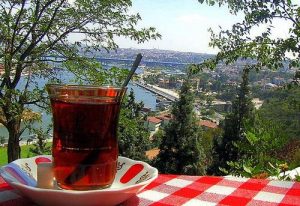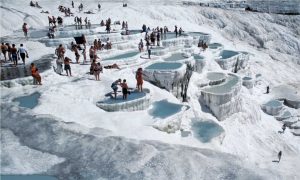Ancient Cities in Turkey
Myra, near modern Kale (Demre), one of the most important towns of ancient Lycia, located near the mouth of the Andriacus River on theMediterranean Sea in southwest Turkey.
Myra was a leading city of the Lycian Union and surpassed Xanthos in early Byzantine times to become the capital city of Lycia. Its remains are situated about 1.5 km north of today’s Demre, on the Kaş-Finike road. Most of the ancient city is now covered by Demre and alluvial silts, for it is located on the river Demre Cay in a fertile alluvial plain. Today this large plain is almost covered with greenhouses stuffed full of tomatoes. In ancient times this area was probably farmed extensively, for export and trade with the interior of Lycia.
The date of Myra’s foundation is unknown. There is no literary mention of it before the 1st century BC, when it is said to be one of the six leading cities of the Lycian Union (the other five were Xanthos, Tlos, Pinara, Patara and Olympos). It is believed to date back much further however, as an outer defensive wall has been dated to the 5th century BC.
The city is well known for its amphitheatre (the largest in Lycia) and the plethora of rock-cut tombs carved in the cliff above the theatre.
The origin of Myra’s name is uncertain and may be a modified form of a Lycian name, like Tlos and Patara. The name was popularly associated with the Greek name for myrrh and the emperor Constantine Porphrogenitus describled the city as “Thrice blessed, myrrh-breathing city of the Lycians, where the mighty Nicolaus, servant of God, spouts forth myrrh in accordance with the city’s name.” However, Myra does not seem to be known for its production of myrrh, the only product actually recorded is rue.
Myra once had a great temple of the goddess Artemis Eleuthera (a distinctive form of Cybele, the ancient mother goddess of Anatolia), said to be Lycia’s largest and most splendid building. It was built on large grounds with beautiful gardens and had an inner court defined by columns, an altar and a statue of the goddess. Not a trace of it remains today, however, since St. Nicholas (the bishop of Myra in the 4th century AD) in his zeal to stamp out paganism in the region, had the temple of Artemis, along with many other temples, completely destroyed.
In Roman times the emperor Germanicus and his wife Agrippina paid Myra a visit in 18 AD and were honoured with statues of themselves erected in Myra’s harbour (Andriace, located 5 km southwest of Myra).
St. Paul changed ships at Myra’s port on his way to his trial in Rome, in about 60 AD, after he had been arrested in Jerusalem after being charged with inciting to riot. Andriace was a chief port for Egyptian vessels passing through the area; Egypt was the breadbasket of the Roman Empire and the imperial government had a fleet of grain ships that carried grain to Rome and other parts of the Empire. Andriace was a major trans-shipment point for grain from Alexandria – grain came from the plain near Myra, and was also possibly brought in by boats, to be shipped onwards from Lycia. It is likely that Paul made the trip to Rome on a grain ship, these were often used to transport passengers as well.
Emperor Hadrian visited Myra in 131 AD and built a huge granary at Andriace composed of seven rooms and decorated with portraits of himself and his wife who accompanied him on his visit. You can still see the granary as you drive along the main Kaş-Finike highway into Demre (the western part of Demre).
The Eastern Roman emperor Theodosius II made Myra the capital of the Byzantine Eparchy Lycia until the city fell to the caliph Harun ar-Rashid in 808 AD after a seige and quickly went into decline. Then, early in the reign of Alexius I Comnenus (1081-1118 AD), Myra was overtaken by Seljuk invaders. Because of the terrible plague that swept through Anatolia (Myra lost one-third of its population to it in 542-3 AD), Muslim raids, flooding and earthquakes, Myra was mostly abandoned by the 11th century. What remains is very impressive – a large theatre with the backdrop of Myra’s famous rock-cut tombs. The sight of these is quite striking




